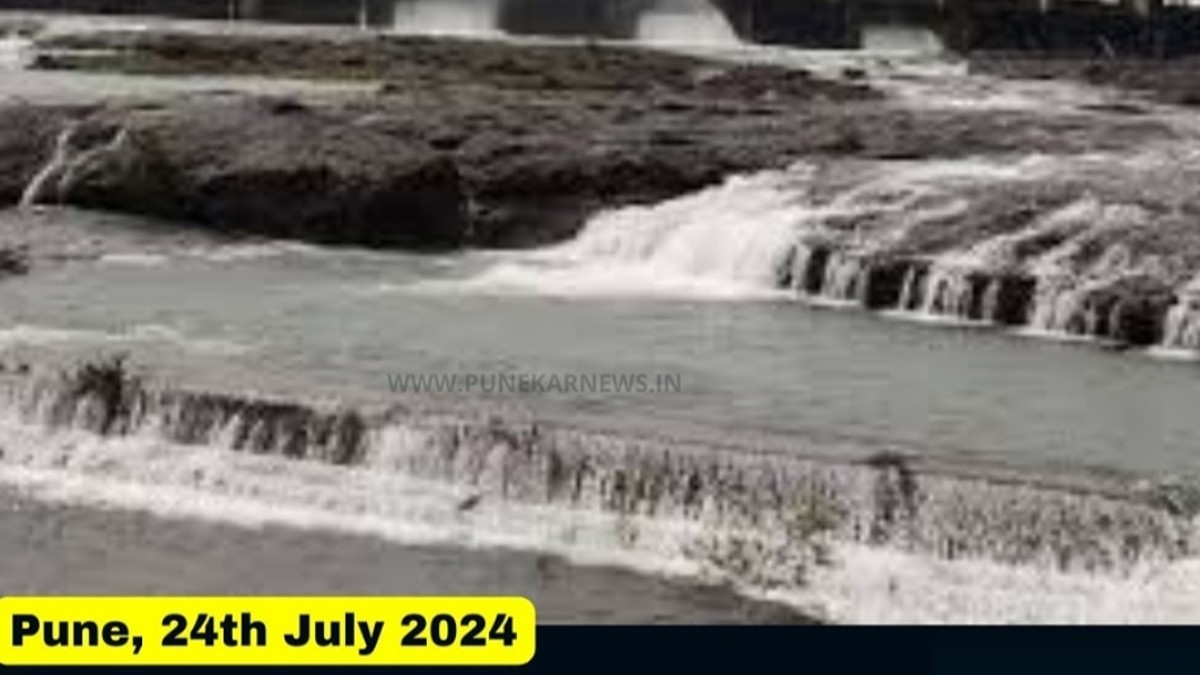
Pune Rain
Pune Rain, city of Pune, known for its educational institutions and burgeoning IT sector, has been facing severe weather conditions due to incessant rainfall. Over the past few days, Pune has experienced torrential rains, leading to widespread disruption in daily life. This article delves into the recent developments, focusing on the opening of the Khadakwasla Dam gates, the impact on train and road traffic, and the alerts issued by the India Meteorological Department (IMD).
The Deluge: An Unexpected Monsoon Fury: Pune Rain
Pune, situated in the western part of India, typically enjoys a moderate climate with well-distributed rainfall during the monsoon season. However, this year, the city has witnessed an unprecedented amount of rain, leading to flooding in various parts. The continuous downpour has resulted in waterlogging, traffic snarls, and an overall disruption of normalcy.
The monsoon rains have been relentless, with the city recording over 200 mm of rainfall in just 48 hours. This excessive rainfall has filled up the reservoirs and water bodies to their brim, prompting the authorities to take emergency measures.
Khadakwasla Dam: A Lifeline Under Pressure: Pune Rain
Khadakwasla Dam, one of the key water sources for Pune, has been under immense pressure due to the heavy rainfall. Built on the Mutha River, the dam plays a crucial role in supplying water to Pune and its surrounding areas. With the reservoir reaching its maximum capacity, the authorities decided to open the dam gates to prevent any structural damage and to manage the water flow effectively.
Opening the dam gates is a significant measure, but it comes with its own set of challenges. The release of water downstream can lead to flooding in low-lying areas, affecting the lives and livelihoods of those residing near the riverbanks.
Impact on Train and Road Traffic: Pune Rain
The opening of the Khadakwasla Dam gates, coupled with incessant rain, has severely impacted both train and road traffic in Pune. The city’s infrastructure has been tested to its limits, with several key routes becoming impassable.
Train Traffic Disruption
Pune is a major railway hub, connecting various parts of Maharashtra and beyond. However, the heavy rainfall has led to waterlogging on tracks, causing delays and cancellations of numerous trains. The tracks near Pune Junction, one of the busiest railway stations in the region, have been submerged in water, making it difficult for trains to pass through safely.
Passengers have been stranded at various stations, with many trains being delayed by hours. The railway authorities have been working round the clock to pump out water from the tracks and restore normalcy, but the relentless rain has made their task arduous.
Road Traffic Chaos
The road traffic situation in Pune has been equally chaotic. Major arterial roads and highways have been flooded, leading to massive traffic jams. The Pune-Mumbai Expressway, a critical route for commuters and transport, has seen severe congestion, with vehicles moving at a snail’s pace due to waterlogged sections.
In the city, several underpasses and low-lying roads have been submerged, causing diversions and adding to the traffic woes. The municipal authorities have deployed teams to manage the traffic and assist stranded motorists, but the sheer volume of water has overwhelmed their efforts.
IMD Issues Alert: Brace for More Rain: Pune Rain
In light of the current situation, the India Meteorological Department (IMD) has issued an alert for Pune and its surrounding areas. The IMD has forecasted more rainfall in the coming days, urging residents to take necessary precautions and avoid unnecessary travel.
The alert includes a warning for potential flooding in low-lying areas and advises people to stay updated with the latest weather information. The authorities have also been advised to be on high alert and ensure that emergency services are ready to respond to any eventuality.
Response and Relief Measures: Pune Rain
The local administration, along with various disaster management agencies, has been actively working to mitigate the impact of the heavy rainfall. Several measures have been put in place to ensure the safety and well-being of the residents.
Emergency Services on High Alert
Emergency services, including the fire brigade, police, and medical teams, have been put on high alert. Rescue operations are underway in areas severely affected by the flooding, with boats and other equipment being used to reach stranded individuals.
Temporary Shelters and Relief Camps
The administration has set up temporary shelters and relief camps for those displaced by the flooding. These shelters provide essential amenities such as food, water, and medical aid. Efforts are being made to ensure that these shelters adhere to COVID-19 protocols to prevent any outbreaks.
Water Management and Drainage
The municipal authorities are focusing on improving water management and drainage systems to prevent further waterlogging. Pumps and other equipment have been deployed to remove water from key areas, and efforts are underway to clear blocked drains and culverts.
The Human Impact: Stories from the Ground
Amidst the chaos and disruption, the resilience of Pune’s residents shines through. Despite the hardships, people have been coming together to support each other and navigate through this challenging time. Here are a few stories that highlight the human impact of the recent rains.
A Community Effort in Baner
In Baner, one of the areas severely affected by the flooding, residents have banded together to assist each other. Local volunteers have been distributing food and water to those in need, and social media has been used to coordinate relief efforts. “It’s heartwarming to see everyone come together in such times. We are all in this together,” says Rohan, a resident of Baner who has been actively involved in the relief efforts.
Stranded Passengers at Pune Junction
At Pune Junction, hundreds of passengers have been stranded due to train delays and cancellations. The railway authorities, along with local NGOs, have been providing food and blankets to those stuck at the station. “I’ve been here for over 12 hours, but the support from fellow passengers and the authorities has been reassuring,” says Meena, who was on her way to Mumbai.
Expert Insights: Understanding the Rainfall Pattern
To gain a deeper understanding of the current weather situation, we spoke to Dr. Ravi Kulkarni, a meteorologist with the IMD. “The heavy rainfall in Pune is part of a larger weather pattern affecting the western coast of India. The monsoon winds have been particularly strong this year, leading to an unusual amount of rain. While this is a natural phenomenon, it is crucial to have robust infrastructure and preparedness to deal with such events,” he explains.
Looking Ahead: Preparing for the Future
The recent rainfall and its impact have highlighted the need for better infrastructure and preparedness to deal with such natural events. While immediate relief and rescue operations are crucial, it is equally important to focus on long-term measures to mitigate the impact of heavy rains.
Improving Urban Drainage Systems
One of the key areas that need attention is the urban drainage system. The existing infrastructure in Pune has struggled to cope with the volume of water, leading to widespread flooding. There is a need for a comprehensive plan to upgrade and maintain the drainage systems to prevent waterlogging in the future.
Strengthening Dam and Reservoir Management
The management of dams and reservoirs is another critical aspect. While the opening of the Khadakwasla Dam gates was necessary, it is essential to have a proactive approach to water management. This includes regular monitoring of water levels, timely release of water, and coordination with local authorities to manage the downstream impact.
Community Awareness and Preparedness
Raising community awareness and preparedness is also vital. Residents should be informed about the potential risks and the measures they can take to stay safe during heavy rains. Regular drills and information campaigns can help build a resilient community that is better equipped to handle such situations.
Conclusion
The recent rains in Pune have been a stark reminder of the power of nature and the need for preparedness. While the immediate focus is on relief and rescue operations, it is crucial to take a long-term view and invest in infrastructure and systems that can better handle such events. The resilience and spirit of the people of Pune have been commendable, and with the right measures, the city can emerge stronger from this challenge.
As the rains continue and the city braces for more, the collective effort of the authorities, emergency services, and the community will be key in navigating through this period. The lessons learned from this experience will hopefully lead to better preparedness and a safer future for Pune.




